Our bees have produced some excellent comb honey this summer. Last week we removed the fully capped frames from our hives. We’ve tried a number of different techniques for comb honey production over the years. We’ve used the older style small wooden sections, Ross Rounds, Bee Pacs, etc., but unless conditions are just right, the bees are loath to work in those smaller sections. The most fool proof approach is to simply use a normal shallow or medium depth frame with a special thin surplus foundation. Once the bees have fully drawn the combs, filled with honey and capped, you simply remove the frame, and cut the comb into sections and package. The photos below demonstrate how this is done. Basically, this comb honey goes directly from the hive to your dinner table! It’s all natural, beautiful to see, and tastes great. Our comb honey this year is mostly produced from the white Dutch clover that blooms prolifically in our area, and yields a very beautiful light amber honey.
Comb honey is actually fairly hard to find these days. I’m not sure why that is. Some beekeepers say its more labor intensive to produce than extract honey, which is probably true if you are a commercial beekeeper. However, for hobby beekeepers one significant advantage is that you don’t have to purchase an expensive extractor and other honey processing equipment. For the end consumer, there are also advantages. Comb honey is totally raw and unprocessed, right from the hive. It has not been strained, or subjected to heat, and is basically exactly how the bees left it in the comb!

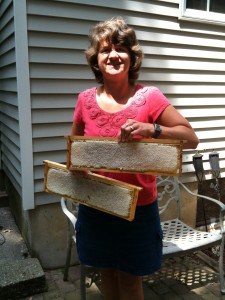
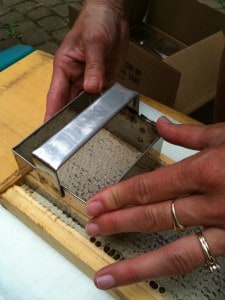
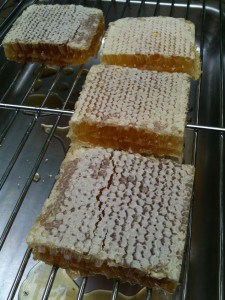

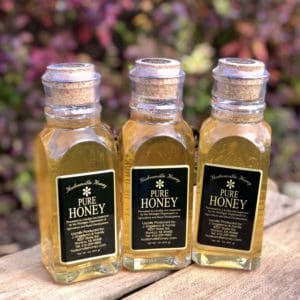



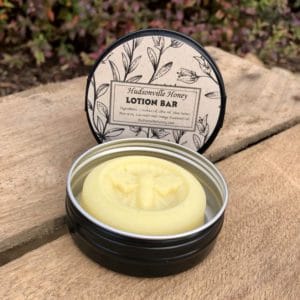
please let me know if you carry tea tree soap.
thank you,
eileen
Hi , where can I buy that honey comb cutter??
@Cynthia, almost any bee supply carries them. Here’s one from Mann Lake: https://www.mannlakeltd.com/comb-cutter-4-1-8-square
Sorry Eileen, we do not carry tree soap.
Bonjour
Possible de me dire où vous avez trouvé les emportés pièces
Merci par avance
Daniel
Hi! I have beens and i want to know if honey cumb cutter is more expensive than normal honey.. in a jar.
I am a beekeeper in Maryland and put 10 shallow frames in one of my hives this year and they turned out spectacular. I was told after I cut the squares and put them on the rack to drain that I must put the pan with the cut honeycomb in the freezer overnight to make sure there were no larvea in the comb. Do you put your comb in the freezer at all???
Yes, we always freeze comb honey sections overnight.